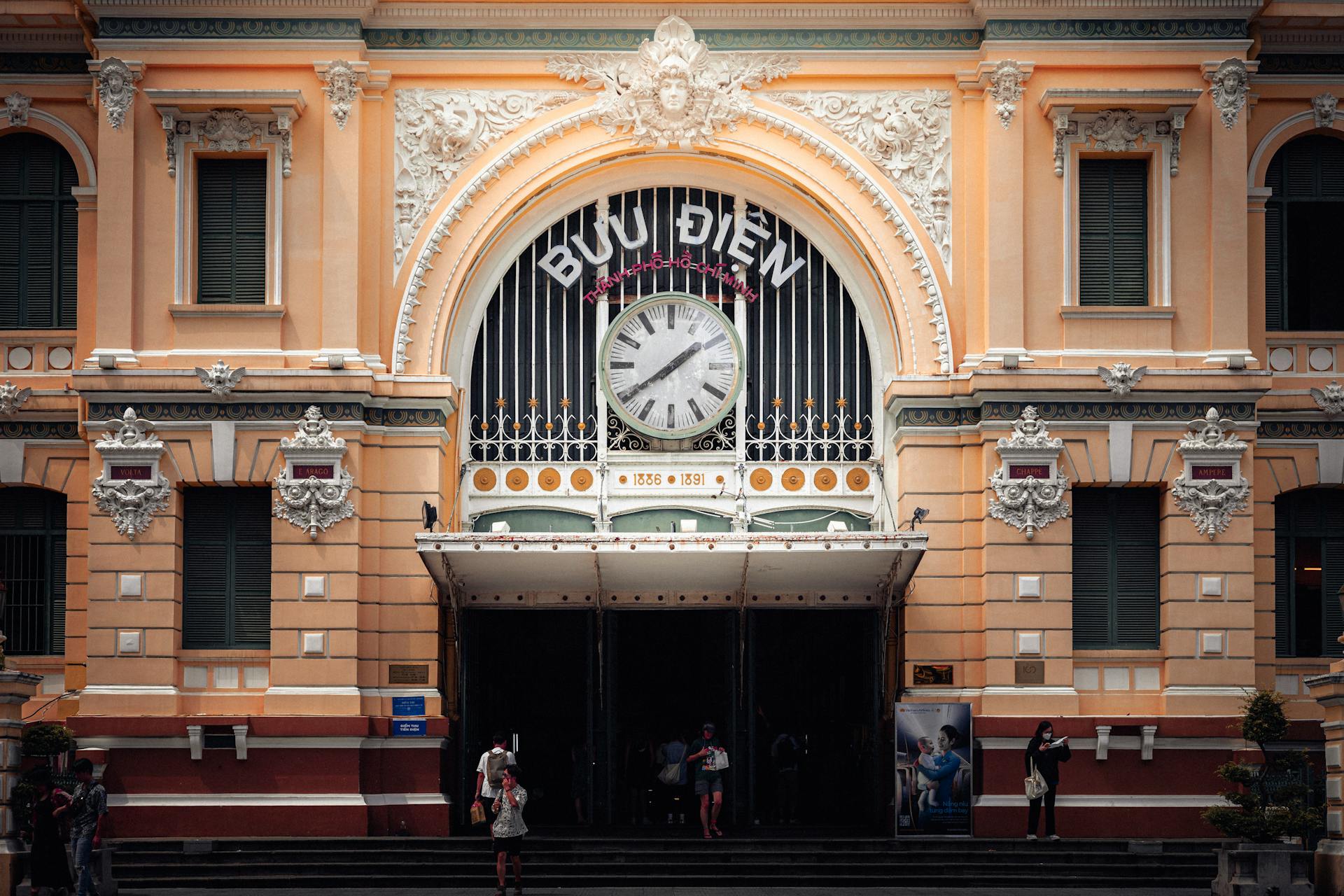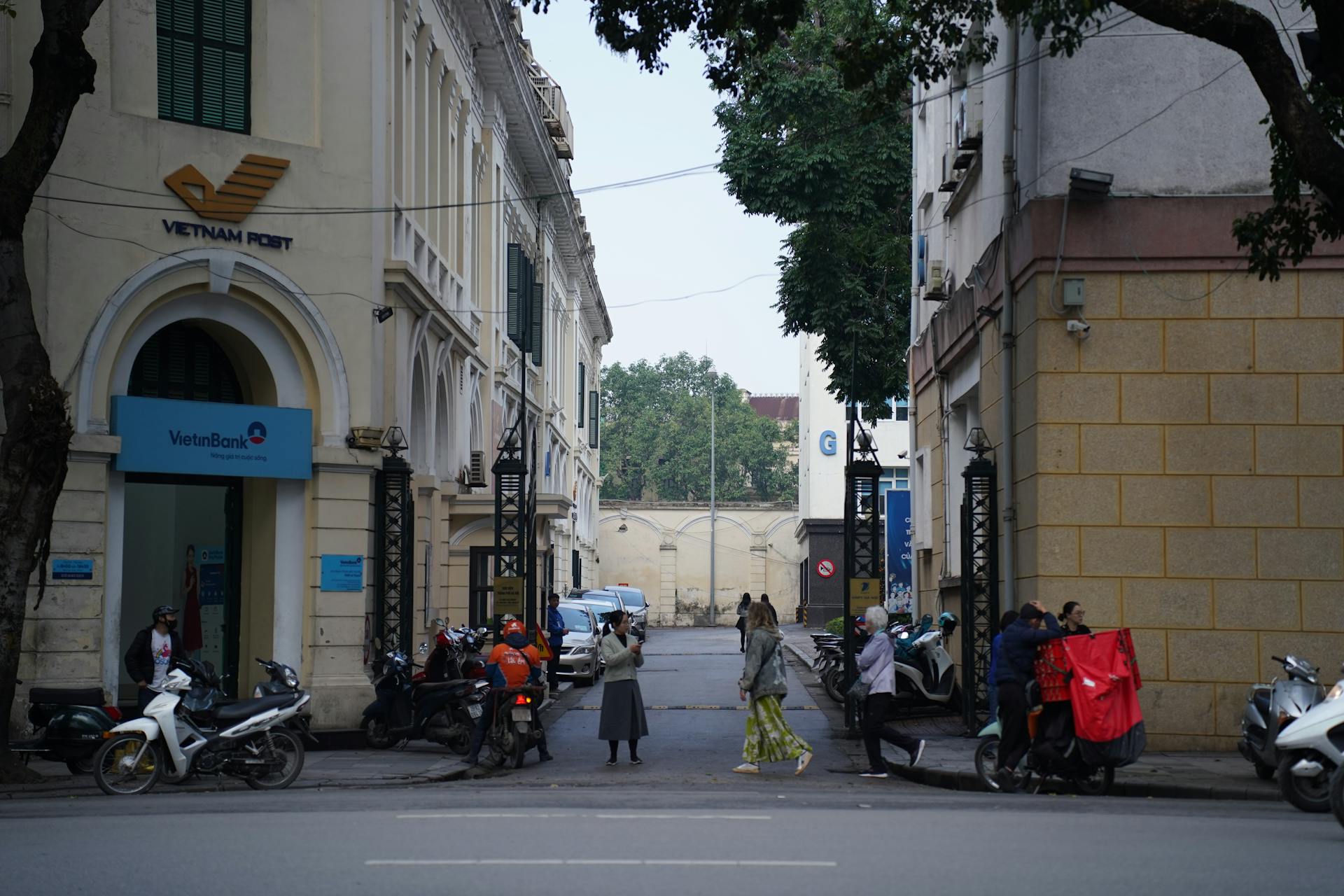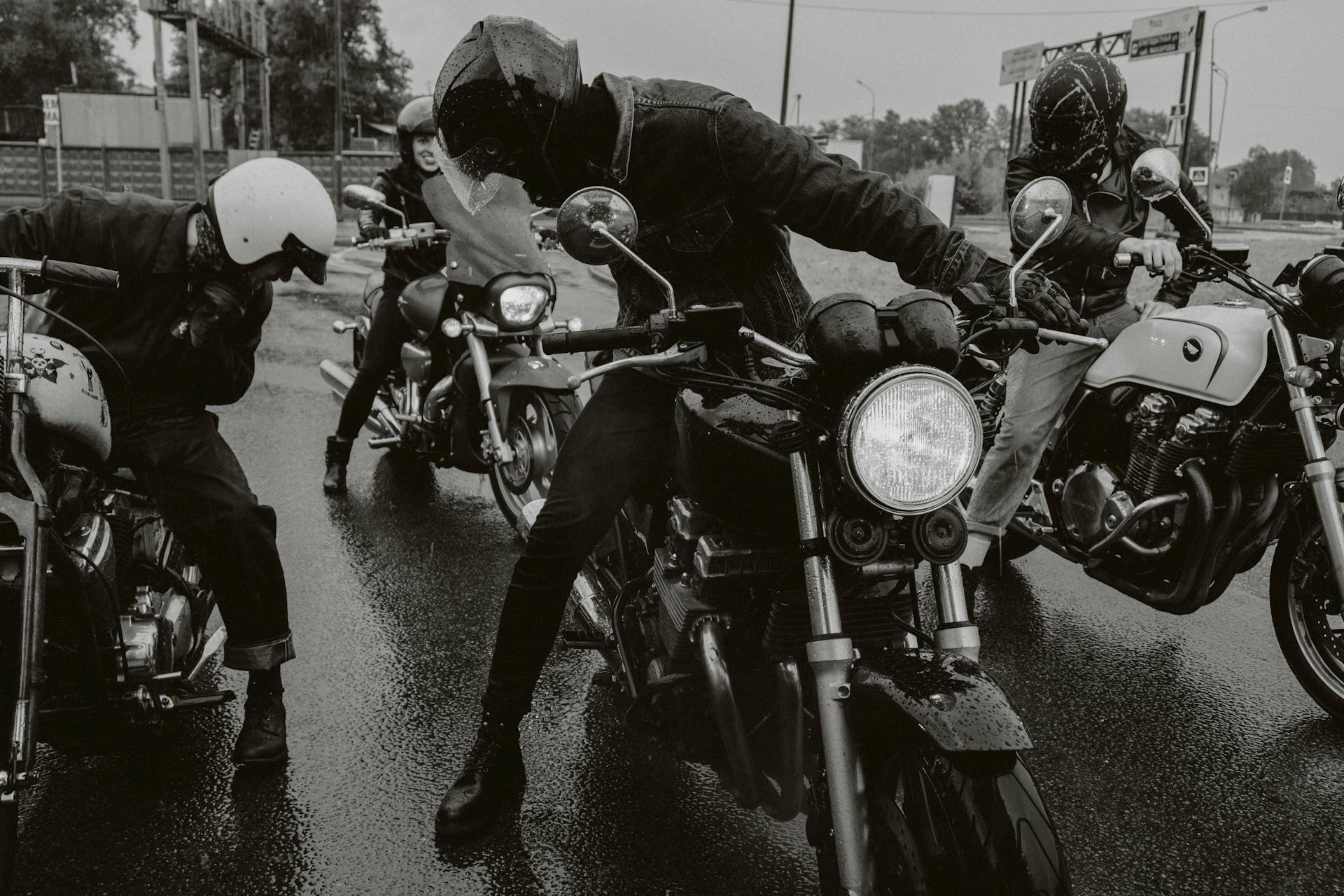
Post riders have been around for centuries, with the first recorded instance dating back to ancient China in 221 BC.
They played a crucial role in communication and transportation, especially in rural areas where other forms of communication were scarce.
In the 19th century, post riders in the United States were tasked with delivering mail between cities and towns, often traveling long distances on horseback.
This was a challenging job, requiring riders to be skilled horsemen and navigators.
History of Post Riders
In Elizabethan England, the post rider system was used by merchants, farmers, constables, innkeepers, soldiers, and sailors, showcasing the remarkable literacy of ordinary people.
The system relied heavily on horses, with each stage being about 10 miles, after which a fresh horse was used. Horses were often kept at inns or hostelries.
The post riders in the American Colonies provided the longest and most complete service before being eliminated by other forms of transport. They were responsible for delivering mail within a certain area for a set length of time.
In 1780, the American postal system consisted of a Postmaster General, a Secretary/Comptroller, three surveyors, one Inspector of Dead Letters, 26 post riders, 75 post offices, and about 2,000 miles of post roads.
Elizabethan England
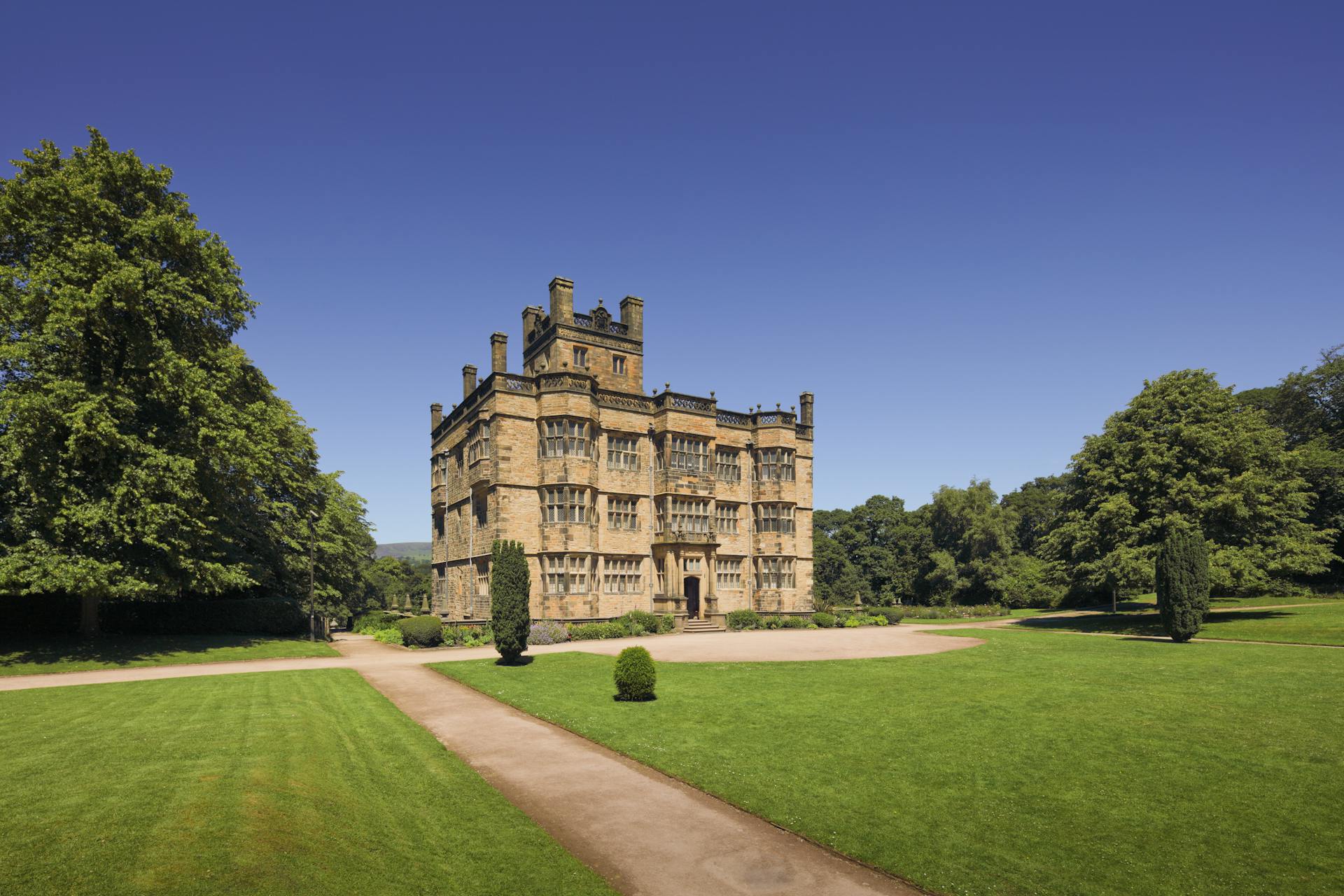
In Elizabethan England, the post rider system was thriving, serving merchants, farmers, constables, innkeepers, soldiers, and sailors alike.
A remarkable standard of literacy among ordinary people allowed them to use the postal system, which was initially intended for limited use.
Each stage of the postal route was only about 10 miles, requiring a fresh horse at every stop.
Huge numbers of horses were involved in this operation, with most being kept at inns or hostelries.
For the first time, a system of post roads was established, although the original usage referred more to the fixed routes of the service than the thoroughfares themselves.
The Hanseatic League
The Hanseatic League was a significant player in the history of post riders, with a regular mounted service established as early as 1274.
This service connected the principal towns of the League with fortified castles that protected merchants during their commerce.
Business and diplomatic messages were handled equally by the service, showcasing its importance in facilitating communication.
The League's post-horse system was well-organised, with horses used exclusively for the letter service.
The Colonial
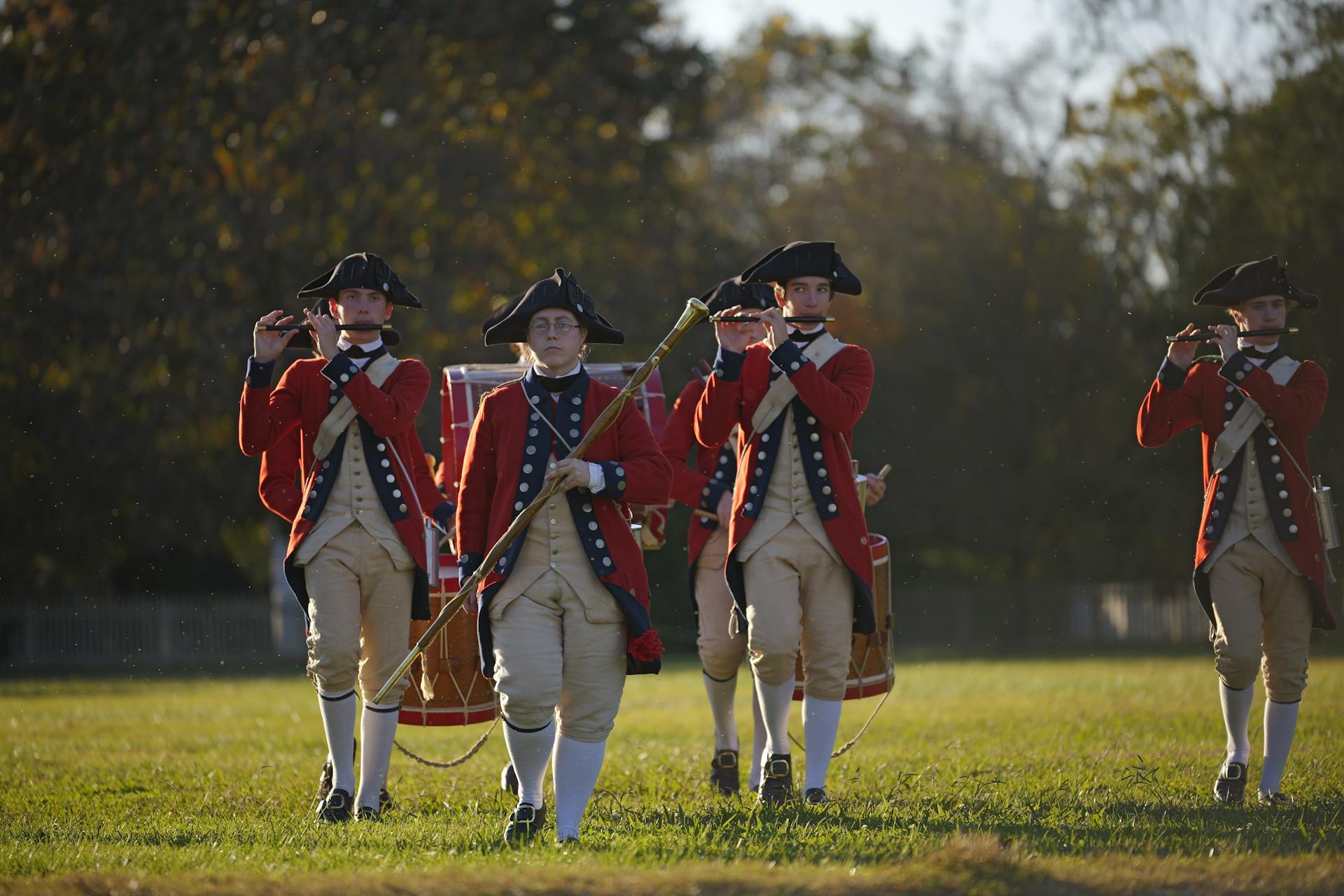
In the American Colonies, postal routes were farmed out to contractors who promised to deliver the mail within a certain area for a set length of time.
The townspeople would have to come to a central location, usually the general store, to pick up the mail, which was a common practice in the early days of postal service.
In 1780, the system consisted of a Postmaster General, a Secretary/Comptroller, three surveyors, one Inspector of Dead Letters, 26 post riders, 75 post offices, and about 2,000 miles of post roads.
Postmasters and post riders were exempt from military duties so as not to interrupt service, which shows how important postal service was even back then.
The post riders had to make good time, and milestones came into their use to measure progress, which highlights the efficiency required of these postal workers.
In 1838, an act of the United States Congress declared that all railroads in the United States were post roads, which had a significant impact on the use of post riders.
This act increased the use of railroads to transmit the mails and limited the use of post riders to postal districts that were not on railway routes, making the postal service more widespread.
A fresh viewpoint: Ups Tracker Code
Horseback
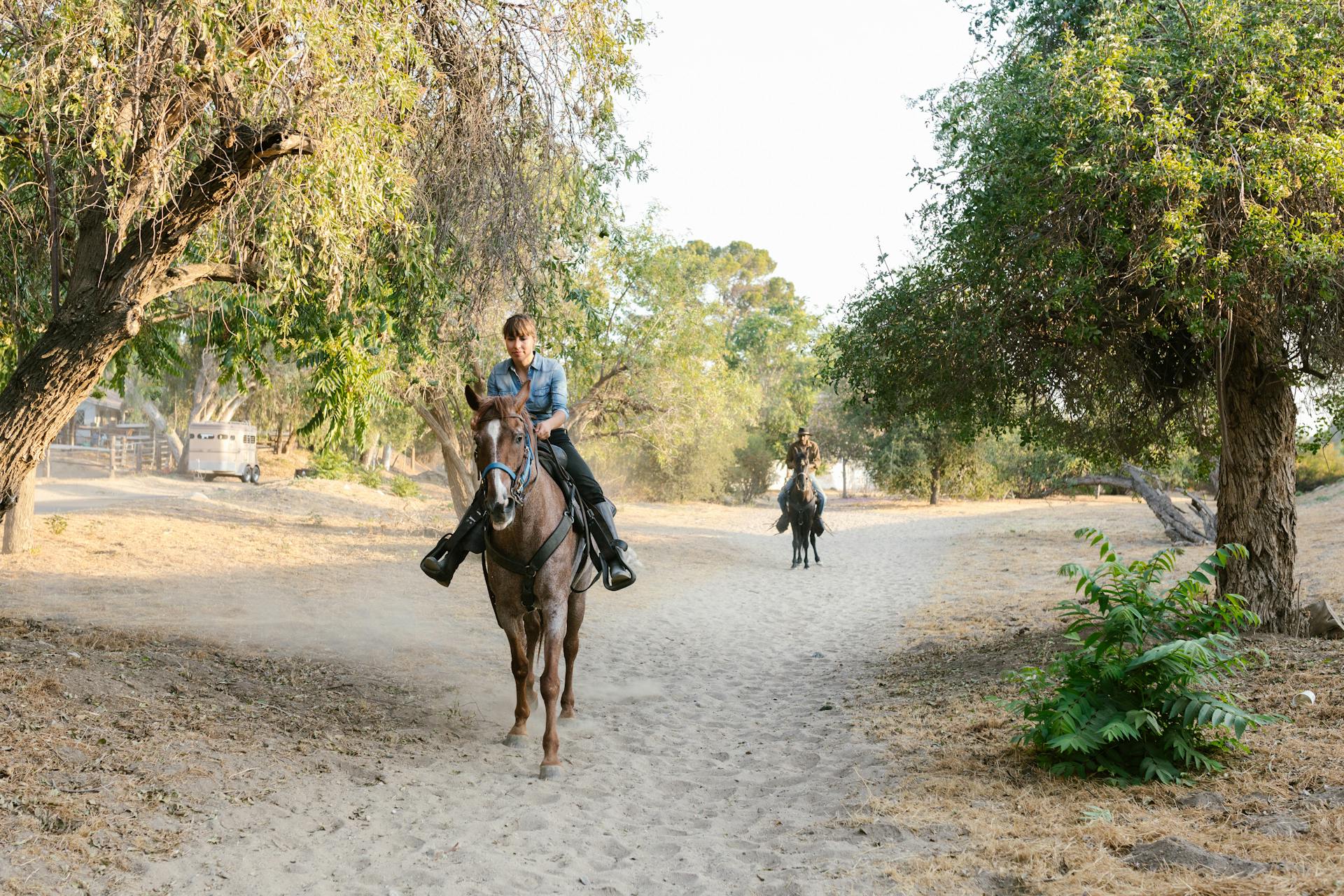
The primary mode of transportation for post riders was horseback, where riders would travel long distances on horseback to deliver mail and messages.
Post riders were skilled horsemen who knew how to navigate challenging terrain and harsh weather conditions on horseback.
Riding at a moderate pace, post riders could cover up to 60 miles per day on horseback.
Horses were an essential part of the postal system, providing the necessary speed and endurance for post riders to complete their routes.
Modern Post Services
Modern Post Services have come a long way since the days of horseback riders.
With the advent of technology, post services have become faster and more efficient. Today, most post services use vehicles and drones to deliver mail and packages.
Some post services still use traditional methods like horseback riding, especially in rural areas where infrastructure is limited. They're a reminder of the past and a testament to the resilience of post riders.

Modern post services also offer a wide range of services, including tracking and delivery confirmation. This helps customers stay informed about the status of their packages.
In some countries, post services are even using AI to optimize delivery routes and reduce carbon emissions. This is a great example of how technology can be used to improve the environment.
Social and Economic Impact
The social and economic impact of post riders was significant in the past. They played a crucial role in connecting rural and urban areas, bridging the communication gap.
Post riders were responsible for delivering mail and messages to remote areas, which helped to facilitate trade and commerce. This, in turn, contributed to the growth of local economies.
In the 19th century, post riders were a vital part of the transportation network, helping to move goods and people across the country. They were often the only means of communication between communities.
The introduction of the postal service also led to an increase in literacy rates, as people were more likely to learn how to read and write in order to send and receive letters.
Style and Culture
Post riders were known for their distinctive style, which was often influenced by the regions they rode through. They typically wore leather boots, woolen stockings, and a cloak to protect themselves from the elements.
Their attire was often a mix of practicality and flair, reflecting their status as messengers and couriers. They would often wear a sash or ribbon to signify their affiliation with a particular company or region.
In the 18th century, post riders in England were required to wear a distinctive uniform, which included a black coat and hat. This uniform was designed to promote a sense of professionalism and unity among the post riders.
Post riders were also known for their love of horses, and they developed a deep understanding of equine behavior and care. They would often ride for long periods of time, and their horses had to be in top condition to maintain the high level of performance required.
In addition to their practical skills, post riders were also expected to be knowledgeable about the regions they rode through. This included understanding local customs, laws, and geography.
Consider reading: Uniform Fourpenny Post
Frequently Asked Questions
What was a post horse?
A post horse was a horse kept at an inn or post house for use by mail carriers or travelers. It was a vital mode of transportation in the past, providing a reliable means of conveyance for people and goods.
Sources
- https://chrisstevensonauthor.com/2016/06/15/colonial-post-riders/
- https://au.news.yahoo.com/australia-post-riders-divided-over-residents-common-bin-act-no-words-005915137.html
- https://www.horseillustrated.com/english-horse-training-horse-posting-trot-9753
- https://en.wikipedia.org/wiki/Post_riders
- https://www.history.com/articles/post-office-mail-delivery
Featured Images: pexels.com
